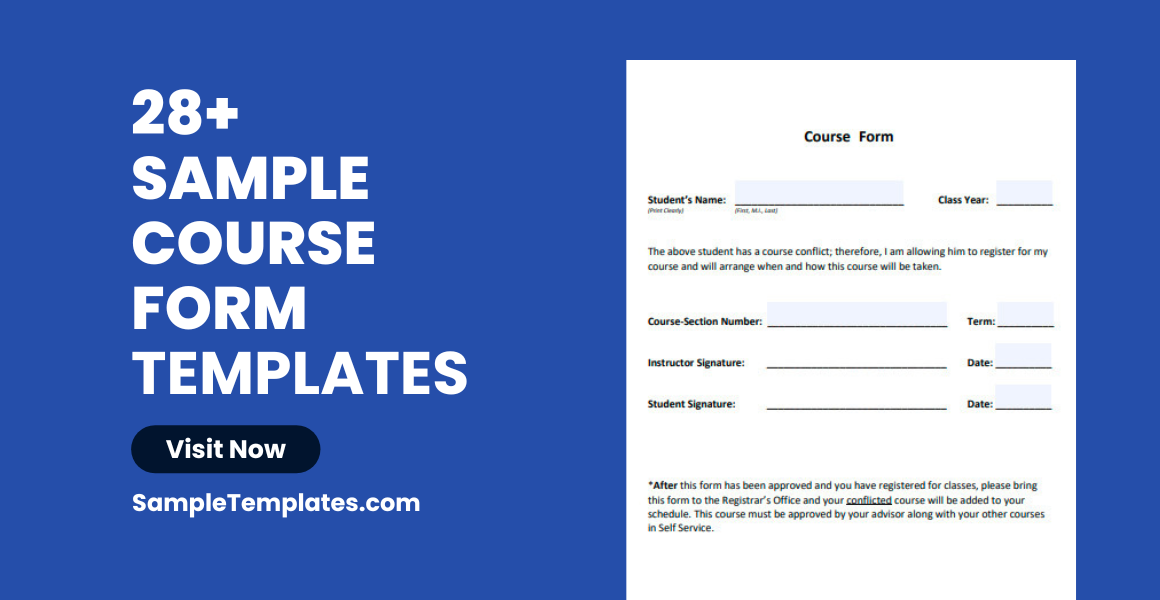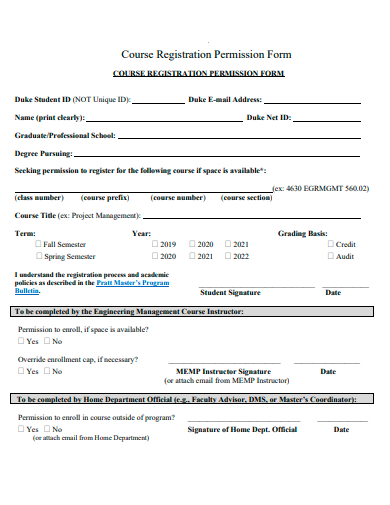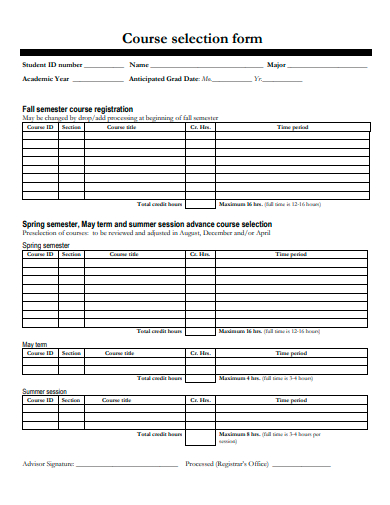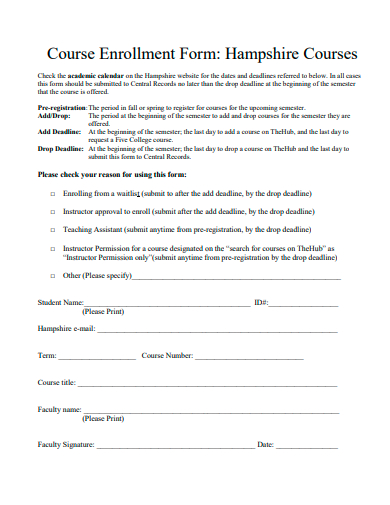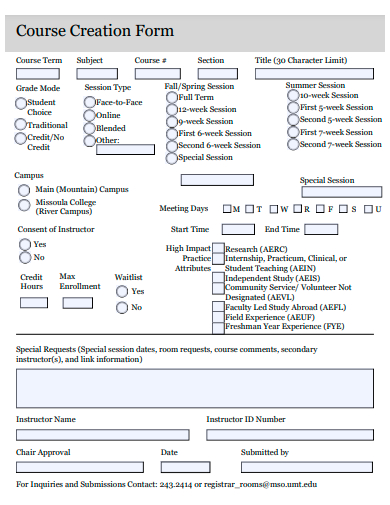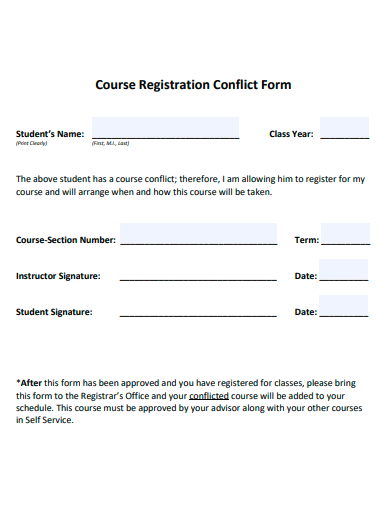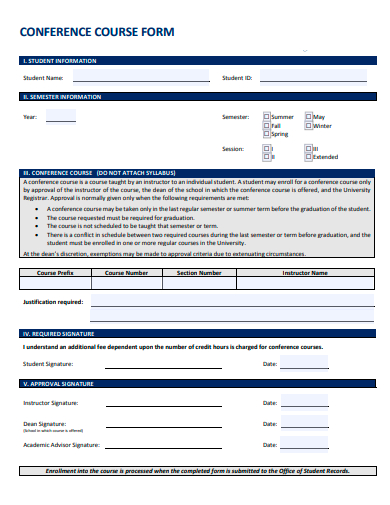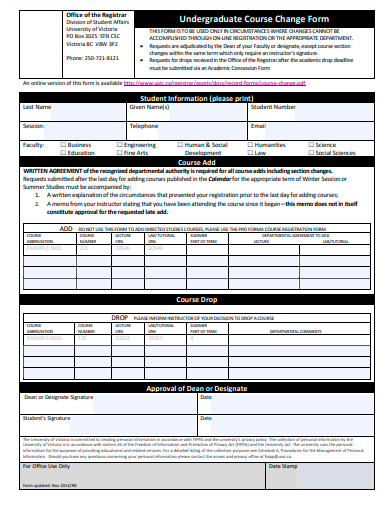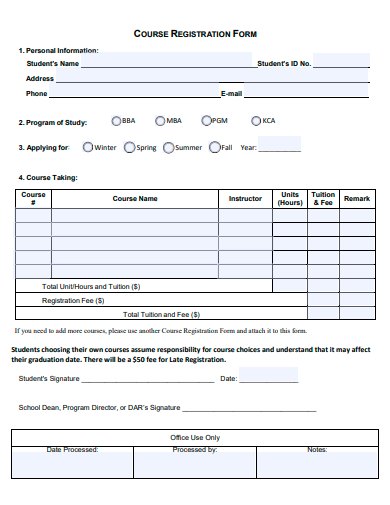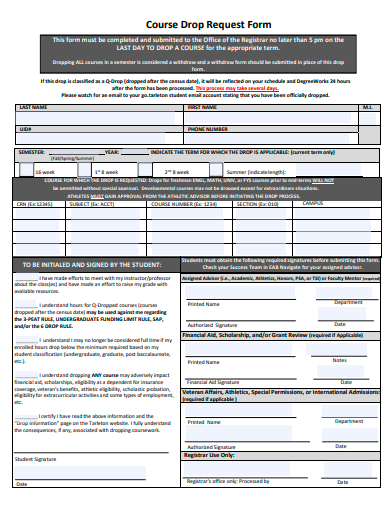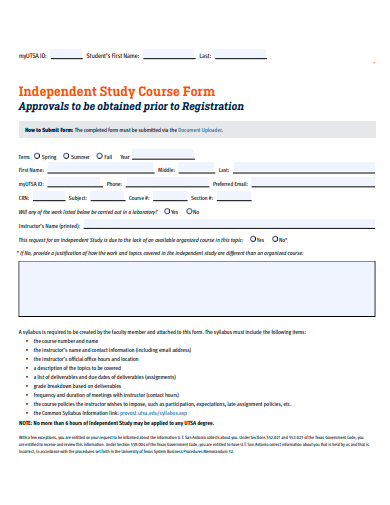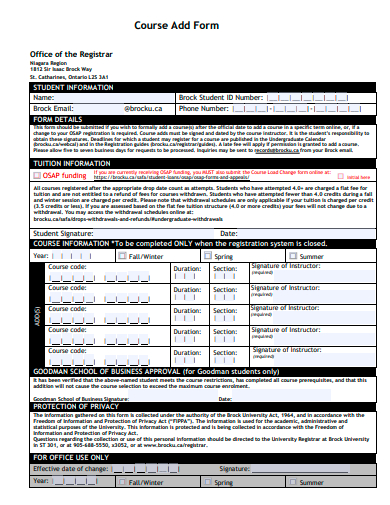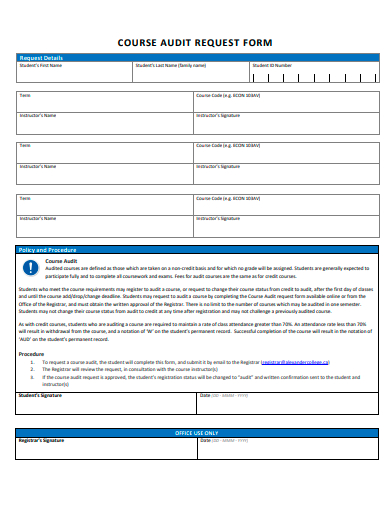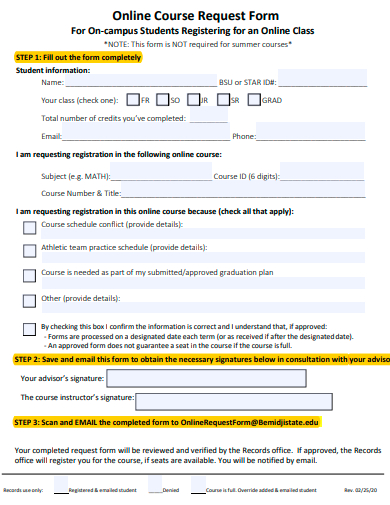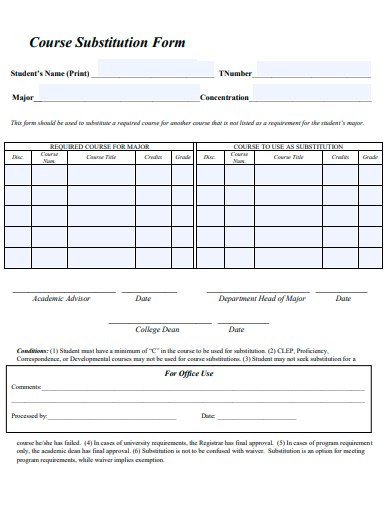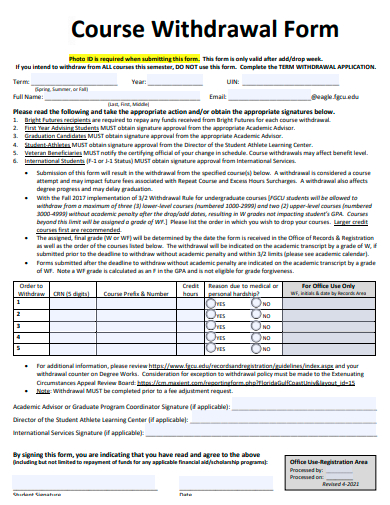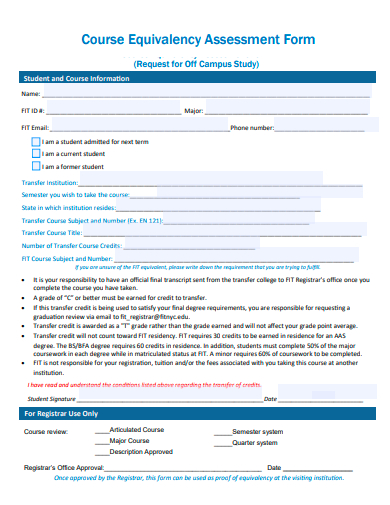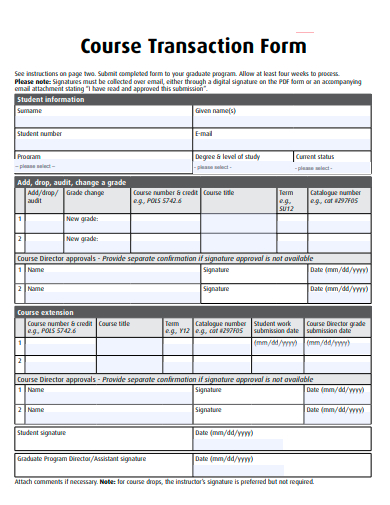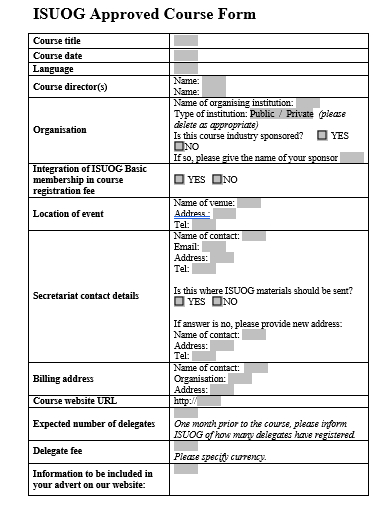In the evolving realm of education and professional development, the ‘Course Form’ is a pivotal tool. Designed to facilitate enrollment and capture course-specific details, it ensures smooth academic journeys for students and trainers alike. From prerequisites to course sample objectives, a comprehensive Course Form is a testament to meticulous sample planning and streamlined administration. Join us as we explore its significance, optimal design, and the integral role it plays in academic and training sectors.
28+ Course Form Samples
1. Sample Training Course Evaluation Form Template
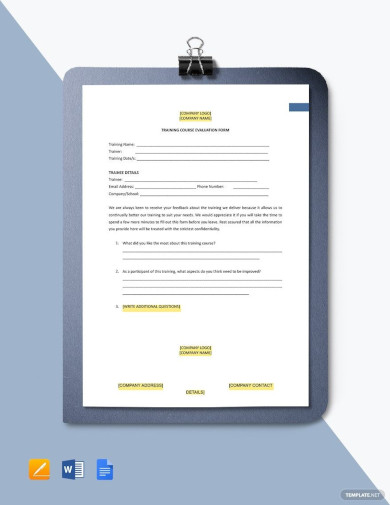
2. Sample Education Course Substitution Request Form Template
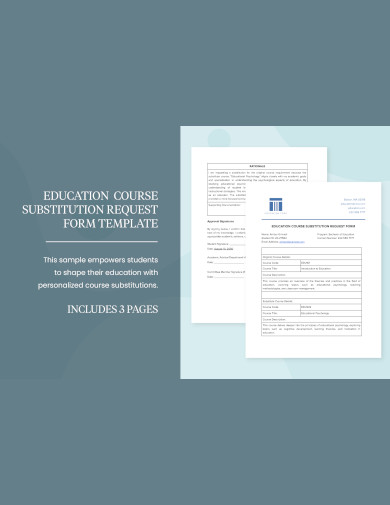
3. Sample School Course Add Request Form Template

4. Sample Online Courses Feedback Form Template
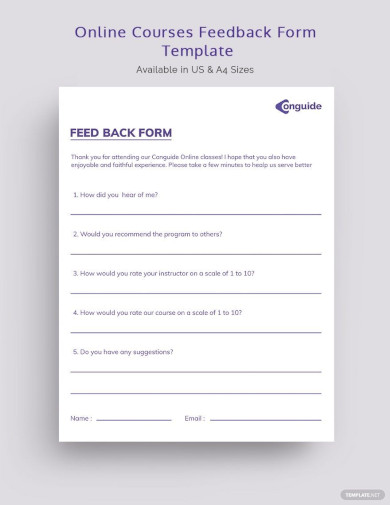
5. Sample Education Course Proposal Form Template
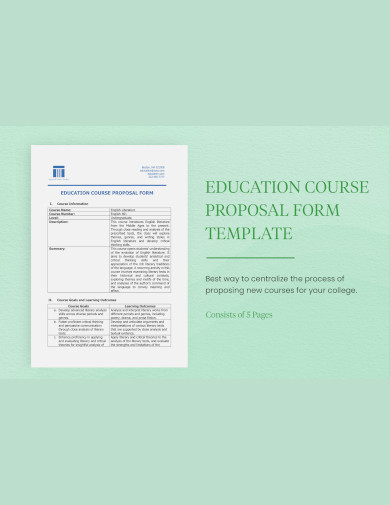
6. Sample Course Registration Permission Form Template
What is a Course Form?
Understanding the Basics of Course Forms
A course form, at its core, is a structured design document or online tool used by educational institutions or training centers to gather information about a specific course offering. It serves multiple purposes, from helping potential students understand the course’s key components to aiding administrators in tracking course sample registrations.
The Evolution of Course Forms
Traditional Paper-based Forms: In the past, course forms were primarily sample paper-based. Students would fill them out manually, and administrative staff would then process these sample forms, often leading to delays and potential errors.
Transition to Digital: With the rise of technology and the internet, many institutions have transitioned to online course forms. These digital forms offer a host of advantages, such as instant processing, fewer errors, and environmental benefits.
Key Components of a Course Form
Course Details: This includes the course name, code, description, and any prerequisites. It provides potential students with an understanding of what the course entails.
Instructor Information: Details about the instructor, such as their qualifications, experience, and contact information, can be crucial for students when making enrollment decisions.
Duration and Schedule: It’s essential to know when the course starts, its total duration, and any specific sample schedule or timing details.
Fees and Payment Options: Most course forms will detail the cost of enrollment and the available payment methods.
Terms and Conditions: These are the rules and guidelines associated with enrolling in the course, including refund policies, course completion criteria, and attendance requirements.
Benefits of Using Course Forms
Course forms, whether digital or traditional, play an essential role in streamlining the operations of educational institutions and improving the user experience for both students and administrators. Here’s a deeper dive into the various advantages they offer:
1. Efficient Data Collection:
- Standardized Information: Course forms ensure that every student provides the same set of data, making it easier to categorize and analyze.
- Accuracy and Consistency: With predefined fields, there’s a lower chance of receiving incomplete or inconsistent information.
2. Improved Decision Making for Students:
- Clear Course Details: Students can make more informed decisions about their education when they have all the pertinent details laid out clearly in the course professional form.
- Transparent Policies: By listing terms and conditions, fees, and other crucial aspects, there’s reduced ambiguity, leading to fewer misunderstandings or disputes down the line.
3. Enhanced Administrative Efficiency:
- Automated Processes: Digital course forms can be integrated with database systems, reducing manual data entry and potential human errors.
- Easy Archiving and Retrieval: Online forms can automatically be stored and sorted, making retrieval a breeze compared to sifting through stacks of paper forms.
4. Eco-friendly:
- Reduction in Paper Use: Digital forms significantly cut down on the need for paper, contributing to environmental sustainability and reducing costs associated with paper, printing, and storage.
5. Immediate Processing:
- Real-time Data Entry: As soon as a student submits a digital form, it can be processed and analyzed, speeding up processes like enrollment, sample feedback analysis, or course adjustments.
- Instant Notifications: Administrators or instructors can receive notifications about new submissions, allowing them to act swiftly.
6. Accessibility and Convenience:
- 24/7 Availability: Digital course forms can be accessed and submitted at any time, providing flexibility for students across different time zones or schedules.
- Mobile Access: Modern digital forms are optimized for mobile devices, ensuring students can access them on the go.
7. Customizability:
- Tailored Forms: Depending on the course or sample program, digital forms can be customized to gather specific information, ensuring relevance.
- Dynamic Fields: Some advanced digital forms can show or hide fields based on previous answers, leading to a more personalized user experience.
8. Cost-Effective:
- Reduction in Administrative Costs: By cutting down on manual data entry, printing, and storage, institutions can realize significant savings.
- Scalability: Digital platforms can handle large volumes of forms simultaneously without a proportionate increase in costs.
9. Enhanced Communication:
- Automated Responses: Digital forms can send automated confirmations or responses upon submission, ensuring students know their form has been received.
- Feedback Mechanisms: Institutions can easily gather feedback about the course or the form itself, aiding in continuous improvement.
10. Data Security:
- Secure Storage: Reputable digital platforms use encryption and robust security protocols to ensure the data is protected.
- Controlled Access: Administrators can define who has access to the data, ensuring confidentiality.
Designing an Effective Course Form
Clarity is Key: Ensure that the form is easy to understand, with clear instructions and logically organized sections.
Limit Mandatory Fields: While it’s essential to collect all the necessary information, try not to overwhelm the user with too many mandatory fields. Strike a balance to ensure user-friendliness.
Mobile Optimization: Many users may access course forms via mobile devices. Ensure that the form is mobile-friendly, with responsive design elements.
Feedback Mechanisms: Incorporate ways for users to provide feedback on the form, which can help institutions make iterative improvements.
Challenges and Solutions in Course Form Management
Data Security: Especially with digital forms, institutions must prioritize the security of student data. Using encrypted platforms and regularly updating security protocols can help.
Accessibility: Ensure that course forms are accessible to all, including those with disabilities. This may mean providing alternative formats or using accessible design principles.
Integration with Other Systems: For institutions that use various software solutions, integrating course forms with other systems can be a challenge. Prioritizing interoperability during software selection can mitigate this. You can also see more templates like Course Registration Form Samples.
Filling Out a Course Form
1. Preparation: Before beginning, ensure you have all necessary process documentation and information on hand. This might include personal identification, prior academic records, and any specific prerequisites mentioned by the institution.
2. Access the Form:
- Paper Forms: If the institution provided a paper-based course form, ensure you have a clear copy. If not, you may need to visit the institution’s office or request one by mail.
- Online Forms: If the form is digital, navigate to the institution’s website or the specific link provided. You might need to create an account or log in to access the form.
3. Personal Details: Start by filling out your personal details. This typically includes:
- Full name
- Date of birth
- Contact information (phone number, email address)
- Address
4. Academic Information:
- Mention your previous academic qualifications. This may require listing schools or colleges attended, the periods of study, and grades or scores obtained.
- If the course has prerequisites, ensure you detail how you meet them.
5. Course Specifics:
- Select the specific course or courses you’re applying for. Some forms might allow multiple selections.
- Indicate preferred timings or batches if the option is available.
6. Instructor Preference: Some institutions allow you to choose an instructor or express a preference. If applicable, fill in this section.
7. Fees and Payment:
- Indicate your chosen payment method (e.g., credit card, bank transfer, cash).
- If there’s an option to pay online, follow the payment gateway instructions carefully.
- For offline payments, note down any specific instructions or reference numbers.
8. Special Requirements: If you have any special needs or requirements, such as disability accommodations or specific learning tools, mention them in the designated section.
9. Declarations and Agreements: Read the terms and conditions, refund sample policies, or any other declarations. It’s crucial to understand these before proceeding.
- Online: There might be a checkbox to acknowledge that you’ve read and agreed to the terms.
- Paper: This might require your signature.
10. Attachments and Documents:
- Online: Scan and upload any requested documents. Ensure the files are in the supported format and within the size limits.
- Paper: Attach any required documents, photos, or certifications to the form.
11. Review: Before submitting, double-check all the information you’ve entered. Ensure there are no errors, especially in crucial sections like contact details or course selection.
12. Submission:
- Online: Click on the ‘submit’ button. You might receive a confirmation email or an acknowledgment number.
- Paper: Mail the form to the institution’s address or drop it off in person. Ensure you keep a copy for your records.
13. Follow-up: Keep an eye on your email or phone for any follow-up communication. Some institutions might send a confirmation of enrollment, further instructions, or a request for additional information.
7. Sample Course Selection Form Template
8. Sample Special Course Approval Form Template
9. Sample Course Enrollment Form Template
10. Sample Course Creation Form Template
11. Sample Course Registration Conflict Form Template
12. Sample Conference Course Form Template
13. Sample Undergraduate Course Change Form Template
14. Sample Course Registration Form Template
15. Sample Course Drop Request Form Template
16. Sample Independent Study Course Form Template
17. Sample Course Add Form Template
18. Sample Course Repetition Request Form Template
19. Sample Course Audit Request Form Template
20. Sample Online Course Request Form Template
21. Sample Employee Course Registration Form Template
22. Sample Course Conflict Resolution Form Template
23. Sample Course Substitution Form Template
24. Sample Open Entry Online Course Approval Form Template
25. Sample Course Withdrawal Form Template
26. Sample Course Equivalency Assessment Form Template
27. Sample Course Status Form Template
28. Sample Course Transaction Form Template
29. Sample Approved Course Form Template
How do you Create a Course Form?
Creating a course registration or application form is essential for educational institutions, training centers, or anyone offering a course to collect necessary details from prospective participants. Here’s a step-by-step guide to creating a comprehensive course form:
Step 1: Define the Form’s Purpose Is this a registration form, an application form, an evaluation form, or something else? Understanding the form’s exact purpose will guide its content and structure. For this guide, we’ll assume it’s a course registration form.
Step 2: Design a Clear Layout The form should be organized and easy to follow. Consider categorizing information fields under headings, such as “Personal Details,” “Course Details,” and “Payment Information.”
Step 3: Collect Personal Information Begin by gathering basic details of the applicant:
- Full Name: First name, middle name, last name.
- Contact Information: Email address, phone number, and mailing address.
- Date of Birth: For age-related courses or eligibility criteria.
Step 4: Specify Course Details This section captures details about the course for which the individual is registering:
- Course Name: Provide a dropdown or sample list of available courses if there’s more than one.
- Course Duration: Start and end dates.
- Preferred Timing: If the course is offered at multiple times.
- Special Requirements: Any specific needs or accommodations the participant might have.
Step 5: Academic or Professional Background For courses that require prior knowledge or experience:
- Educational Qualifications: Degrees, institutions attended, and graduation years.
- Work Experience: Relevant roles, organizations, duration, and any pertinent skills.
- References: If required, spaces for names and contact information of referees.
Step 6: Payment Information If the form is also used for enrollment:
- Course Fee: Clearly state the fee for the course.
- Payment Method: Options like credit card, bank transfer, check, etc. (Avoid collecting sensitive payment information on paper; use secure online methods for this.)
- Terms and Conditions: Including refund policies, if applicable.
Step 7: Additional Information or Queries Provide a section where applicants can jot down any additional information they think is relevant or ask questions they might have about the course.
Step 8: Declaration and Signature Include a declaration statement confirming the accuracy of the provided information. Below this, provide space for the applicant’s signature and the date.
Step 9: Formatting and Distribution Format the form for your intended distribution method:
- For Print: Ensure it’s in a printable layout, such as a PDF.
- For Digital Use: Create an online version using platforms like Google Forms, JotForm, or SurveyMonkey, which can be filled out and submitted electronically.
Step 10: Review and Feedback Before making the form available, review it for clarity and completeness. You might also consider getting feedback from a few potential users to ensure its user-friendliness.
In Conclusion, Course forms play a pivotal role in the educational landscape, bridging the gap between institutions and students. As technology continues to evolve, the ways we design, distribute, and process these forms will also change, emphasizing the importance of staying updated and prioritizing both efficiency and user experience. You can also see more templates like Course Application Samples.
Related Posts
Parent Consent Form Samples & Templates
Sample Release of Liability Forms
Sample Training Feedback Forms
Sample Sworn Affidavit Forms
Agreement Form Samples & Templates
Vehicle Inspection Forms Samples & Templates
Sample Employee Advance Forms
Sample Child Travel Consent Forms
Sample Testimonial Request Forms
Sample Employee Details Forms
Sample Divorce Forms
Sample Attestation Forms
Employee Performance Appraisal Form Templates
FREE 9+ Sample Presentation Evaluation Forms in MS Word
FREE 10+ School Admission Form Samples & Templates in MS Word | PDF
